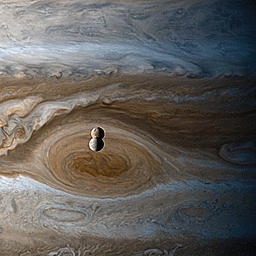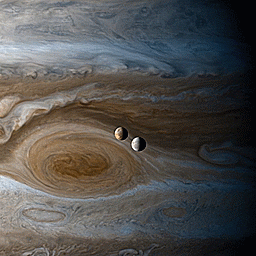So I Just Discovered That The Famous Depth Chart Of Lake Baikal, You Know, This One
So I just discovered that the famous depth chart of Lake Baikal, you know, this one

Is
Uh
Not the whole picture

So this is going to haunt me forever
More Posts from Starry-shores and Others
Decoding Nebulae
We can agree that nebulae are some of the most majestic-looking objects in the universe. But what are they exactly? Nebulae are giant clouds of gas and dust in space. They’re commonly associated with two parts of the life cycle of stars: First, they can be nurseries forming new baby stars. Second, expanding clouds of gas and dust can mark where stars have died.

Not all nebulae are alike, and their different appearances tell us what's happening around them. Since not all nebulae emit light of their own, there are different ways that the clouds of gas and dust reveal themselves. Some nebulae scatter the light of stars hiding in or near them. These are called reflection nebulae and are a bit like seeing a street lamp illuminate the fog around it.

In another type, called emission nebulae, stars heat up the clouds of gas, whose chemicals respond by glowing in different colors. Think of it like a neon sign hanging in a shop window!

Finally there are nebulae with dust so thick that we’re unable to see the visible light from young stars shine through it. These are called dark nebulae.

Our missions help us see nebulae and identify the different elements that oftentimes light them up.
The Hubble Space Telescope is able to observe the cosmos in multiple wavelengths of light, ranging from ultraviolet, visible, and near-infrared. Hubble peered at the iconic Eagle Nebula in visible and infrared light, revealing these grand spires of dust and countless stars within and around them.

The Chandra X-ray Observatory studies the universe in X-ray light! The spacecraft is helping scientists see features within nebulae that might otherwise be hidden by gas and dust when viewed in longer wavelengths like visible and infrared light. In the Crab Nebula, Chandra sees high-energy X-rays from a pulsar (a type of rapidly spinning neutron star, which is the crushed, city-sized core of a star that exploded as a supernova).

The James Webb Space Telescope will primarily observe the infrared universe. With Webb, scientists will peer deep into clouds of dust and gas to study how stars and planetary systems form.

The Spitzer Space Telescope studied the cosmos for over 16 years before retiring in 2020. With the help of its detectors, Spitzer revealed unknown materials hiding in nebulae — like oddly-shaped molecules and soot-like materials, which were found in the California Nebula.

Studying nebulae helps scientists understand the life cycle of stars. Did you know our Sun got its start in a stellar nursery? Over 4.5 billion years ago, some gas and dust in a nebula clumped together due to gravity, and a baby Sun was born. The process to form a baby star itself can take a million years or more!

After billions more years, our Sun will eventually puff into a huge red giant star before leaving behind a beautiful planetary nebula (so-called because astronomers looking through early telescopes thought they resembled planets), along with a small, dense object called a white dwarf that will cool down very slowly. In fact, we don’t think the universe is old enough yet for any white dwarfs to have cooled down completely.
Since the Sun will live so much longer than us, scientists can't observe its whole life cycle directly ... but they can study tons of other stars and nebulae at different phases of their lives and draw conclusions about where our Sun came from and where it's headed. While studying nebulae, we’re seeing the past, present, and future of our Sun and trillions of others like it in the cosmos.

To keep up with the most recent cosmic news, follow NASA Universe on Twitter and Facebook.
Make sure to follow us on Tumblr for your regular dose of space.

Hubble’s Messier Catalog by NASA’s Marshall Space Flight Center
Hiking to the largest Ammonite in the world!
Video description:
Titanites lived during the Late Jurassic Period and had a shell diameter of around 137 centimetres! surprisingly it wasn’t the largest ammonoid, as some species such as Parapuzosia could get over twice as large!
There were also some plant fossils around the area of this site!
Dear @thought-cafe team, we need more Crash Course Astronomy episodes! Can you please do a Season 2? Dr. Phil Plait is awesome, and we miss him!

If you’re excited about the juno news today, sink your teeth into a Crash Course episode that’s all about Jupiter! 🔭 https://youtu.be/Xwn8fQSW7-8


“We don’t just have a skeleton,” said one of the nodosaur researchers involved. “We have a dinosaur as it would have been.”
Known as a nodosaur, this 110 million-year-old, armored plant-eater is the best preserved fossil of its kind ever found.
Source | Source

The Sun from the Internation Space Station
-
 mist-dragoon liked this · 1 month ago
mist-dragoon liked this · 1 month ago -
 stillcantgetoverthesilmarillion liked this · 6 months ago
stillcantgetoverthesilmarillion liked this · 6 months ago -
 toxicspacedust liked this · 6 months ago
toxicspacedust liked this · 6 months ago -
 polarseven liked this · 6 months ago
polarseven liked this · 6 months ago -
 leochantisallspiders reblogged this · 6 months ago
leochantisallspiders reblogged this · 6 months ago -
 leochantisallspiders reblogged this · 6 months ago
leochantisallspiders reblogged this · 6 months ago -
 entropicfeline liked this · 6 months ago
entropicfeline liked this · 6 months ago -
 pyromaniacbibliophile liked this · 6 months ago
pyromaniacbibliophile liked this · 6 months ago -
 ub-sessed liked this · 8 months ago
ub-sessed liked this · 8 months ago -
 esquizo3214378 reblogged this · 8 months ago
esquizo3214378 reblogged this · 8 months ago -
 esquizo3214378 liked this · 8 months ago
esquizo3214378 liked this · 8 months ago -
 totallybemused reblogged this · 8 months ago
totallybemused reblogged this · 8 months ago -
 willcraftapple11 reblogged this · 8 months ago
willcraftapple11 reblogged this · 8 months ago -
 peapod20001 liked this · 8 months ago
peapod20001 liked this · 8 months ago -
 honig-bienchen reblogged this · 8 months ago
honig-bienchen reblogged this · 8 months ago -
 honig-bienchen liked this · 8 months ago
honig-bienchen liked this · 8 months ago -
 tired-reader-writer reblogged this · 8 months ago
tired-reader-writer reblogged this · 8 months ago -
 kateofumbar liked this · 8 months ago
kateofumbar liked this · 8 months ago -
 cofa liked this · 8 months ago
cofa liked this · 8 months ago -
 totallybemused liked this · 8 months ago
totallybemused liked this · 8 months ago -
 clovechicken reblogged this · 8 months ago
clovechicken reblogged this · 8 months ago -
 tatterdemallionsails liked this · 10 months ago
tatterdemallionsails liked this · 10 months ago -
 leoniedesigns liked this · 11 months ago
leoniedesigns liked this · 11 months ago -
 fiery-feather reblogged this · 11 months ago
fiery-feather reblogged this · 11 months ago -
 fiery-feather liked this · 11 months ago
fiery-feather liked this · 11 months ago -
 igothicprincess liked this · 1 year ago
igothicprincess liked this · 1 year ago -
 psychicpinenut liked this · 1 year ago
psychicpinenut liked this · 1 year ago -
 everything-is-connected reblogged this · 1 year ago
everything-is-connected reblogged this · 1 year ago -
 sassy-spocko reblogged this · 1 year ago
sassy-spocko reblogged this · 1 year ago -
 sassy-spocko liked this · 1 year ago
sassy-spocko liked this · 1 year ago -
 darthlenaplant reblogged this · 1 year ago
darthlenaplant reblogged this · 1 year ago -
 darthlenaplant liked this · 1 year ago
darthlenaplant liked this · 1 year ago -
 i-need-a-good-blog-name liked this · 1 year ago
i-need-a-good-blog-name liked this · 1 year ago -
 coffee-without-a-pause liked this · 1 year ago
coffee-without-a-pause liked this · 1 year ago -
 themischiefoftad liked this · 1 year ago
themischiefoftad liked this · 1 year ago -
 aeshnacyanea2000 reblogged this · 1 year ago
aeshnacyanea2000 reblogged this · 1 year ago -
 aykaypee reblogged this · 1 year ago
aykaypee reblogged this · 1 year ago -
 aykaypee liked this · 1 year ago
aykaypee liked this · 1 year ago -
 skeletor-ify liked this · 1 year ago
skeletor-ify liked this · 1 year ago -
 ali-ali-al1 liked this · 1 year ago
ali-ali-al1 liked this · 1 year ago -
 palsorow reblogged this · 2 years ago
palsorow reblogged this · 2 years ago -
 hubcaptastrophe reblogged this · 2 years ago
hubcaptastrophe reblogged this · 2 years ago -
 3rdrainbow liked this · 2 years ago
3rdrainbow liked this · 2 years ago -
 erdesse liked this · 2 years ago
erdesse liked this · 2 years ago -
 smoothieee liked this · 2 years ago
smoothieee liked this · 2 years ago -
 milo-made-this liked this · 2 years ago
milo-made-this liked this · 2 years ago -
 r0ttenfr0g liked this · 2 years ago
r0ttenfr0g liked this · 2 years ago -
 november-february liked this · 2 years ago
november-february liked this · 2 years ago -
 insidealetterbox liked this · 2 years ago
insidealetterbox liked this · 2 years ago

Amateur astronomer, owns a telescope. This is a side blog to satiate my science-y cravings! I haven't yet mustered the courage to put up my personal astro-stuff here. Main blog : @an-abyss-called-life
212 posts







